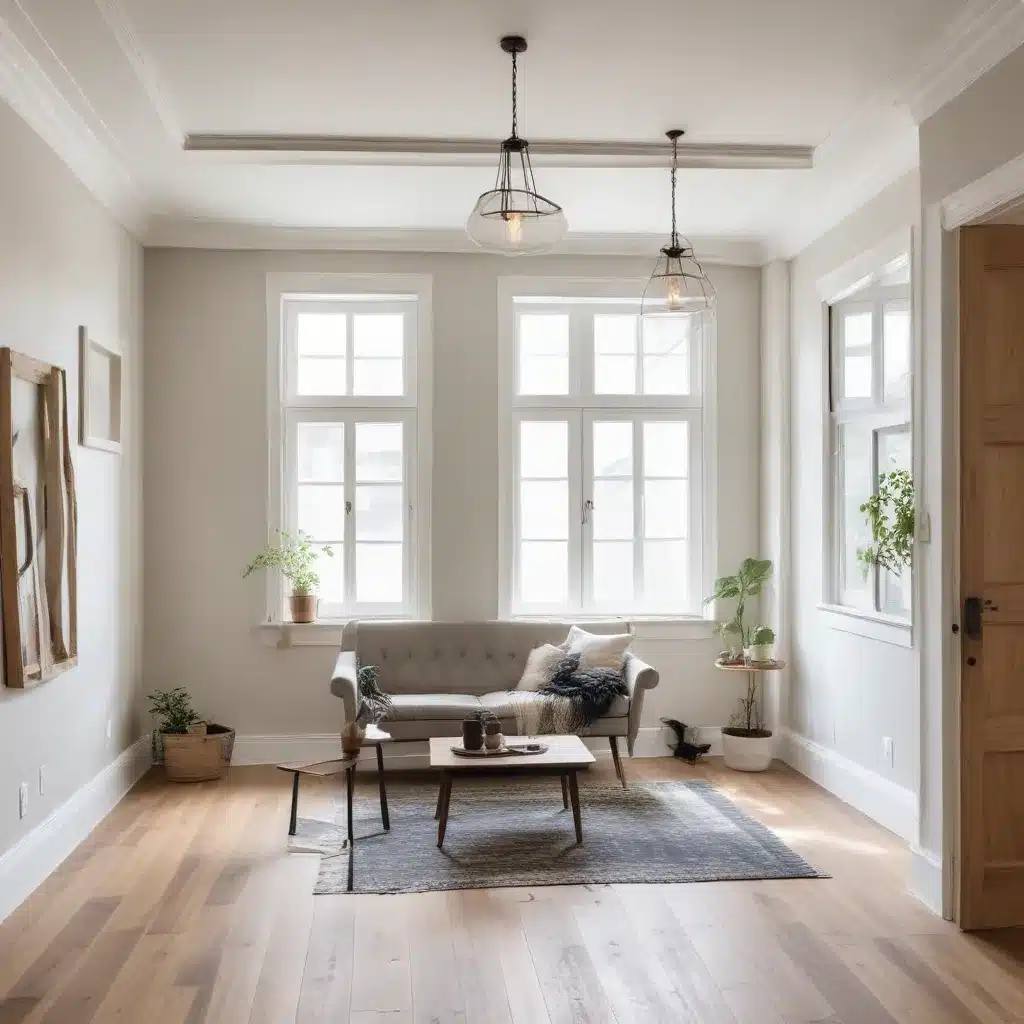
Renovation Rebirth: Breathe New Life Into Outdated Spaces for Less
Are you tired of living in a home that feels stuck in the past? Do you dream of transforming your space into a modern, functional oasis, but worry that the costs will break the bank? Fear not, reluctant renovator – with the right strategies and a touch of creativity, you can breathe new life into your outdated spaces without breaking the bank.
Identifying Outdated Spaces
The first step in any successful renovation is to assess your home and identify areas that are in desperate need of an upgrade. Look for signs of aging, such as cracked tiles, worn carpets, or outdated appliances. Consider the overall aesthetic – does your home feel dark, cramped, or stuck in a bygone era? These are telltale signs that it’s time for a transformation.
Assessing Renovation Needs
Once you’ve identified the problem areas, it’s time to take a closer look and determine the extent of the work required. Conduct a thorough evaluation of the space, considering factors like structural integrity, energy efficiency, and layout. This will help you prioritize your renovation goals and allocate your budget accordingly.
Cost-Effective Upgrades
Now, the million-dollar question: how do you tackle these renovations without breaking the bank? The key is to focus on strategic, budget-friendly upgrades that deliver the most bang for your buck. For example, a fresh coat of low-VOC paint can instantly brighten up a room, while swapping out dated light fixtures can transform the entire ambiance. Don’t be afraid to explore DIY projects, such as refinishing hardwood floors or building custom shelving – just be mindful of your skill level and safety considerations.
Breathing New Life: Design Principles
Once you’ve addressed the practical concerns, it’s time to delve into the world of design. Transforming your outdated space into a modern, functional haven requires a keen eye for space optimization, timeless aesthetics, and enhanced functionality.
Maximizing Space Utilization
One of the most common challenges in older homes is limited square footage. To combat this, get creative with your layout and explore multi-functional furniture, built-in storage solutions, and strategic zoning. For example, a murphy bed or a custom-built desk that doubles as a dining table can make the most of a small bedroom or home office.
Incorporating Timeless Aesthetics
While trends come and go, timeless design principles will ensure your renovation stands the test of time. Opt for classic materials like hardwood, natural stone, and high-quality tile, and incorporate neutral color palettes that can be easily updated with accessories. Remember, the goal is to create a space that feels fresh and modern, yet still reflective of your personal style.
Enhancing Functionality
A successful renovation isn’t just about looks – it’s also about improving the practical aspects of your home. This could involve upgrading outdated electrical systems, installing energy-efficient windows, or reorganizing the kitchen layout to make everyday tasks more efficient. By prioritizing functionality, you’ll not only enhance the livability of your space but also increase its long-term value.
Budgeting for Renovation Success
Perhaps the most daunting aspect of any renovation project is the financial component. However, with careful planning and strategic decision-making, you can stretch your budget and achieve your desired results.
Prioritizing Investments
When it comes to budgeting, it’s essential to identify your non-negotiable must-haves and prioritize them accordingly. This might mean splurging on a high-quality kitchen appliance or opting for durable, eco-friendly flooring over a more decorative option. By prioritizing the essential elements, you can allocate your funds wisely and ensure that your renovation dollars are well-spent.
Exploring Financing Options
If your renovation budget is tight, consider exploring financing options that can help spread the costs over time. This could include a home equity loan, a personal loan, or even creative crowd-funding platforms. Just be sure to thoroughly research the terms and conditions to avoid any unexpected pitfalls down the line.
Tracking Expenditures
Lastly, diligent record-keeping is key to staying on budget. Meticulously track your material costs, labor expenses, and unexpected fees to ensure that you don’t overspend. This will not only help you stay within your budget but also provide valuable insights for future renovations.
Sustainable Revitalization: Eco-Friendly Approaches
In today’s climate-conscious world, sustainability has become a crucial consideration in any home renovation project. By embracing eco-friendly strategies, you can reduce your environmental impact while saving money in the long run.
Energy-Efficient Upgrades
One of the most impactful steps you can take is to improve your home’s energy efficiency. This could involve upgrading insulation, installing high-performance windows, or switching to LED lighting. These measures not only reduce your carbon footprint but also lower your utility bills, making them a wise investment in your home’s future.
Recycling and Repurposing Materials
When it comes to construction waste, the greenest approach is to reduce, reuse, and recycle. Explore ways to repurpose existing materials, such as transforming old cabinets into a custom media console or using salvaged wood for a one-of-a-kind coffee table. By keeping materials out of landfills, you’ll minimize your environmental footprint while adding unique character to your renovated space.
Minimizing Waste
In addition to recycling, proactive planning can go a long way in reducing renovation-related waste. Work closely with your contractors to order materials accurately, minimize packaging, and properly dispose of hazardous substances. These small steps can make a big difference in your overall environmental impact.
As you embark on your renovation journey, remember that transformation is not just about the physical changes. It’s about breathing new life into your living space, enhancing your family’s well-being, and embracing sustainable practices that benefit the planet. With the right strategies and a bit of creativity, you can unlock the true potential of your home and create a space that you’ll love for years to come. For more inspiration and expert advice, be sure to visit Reluctant Renovator.



